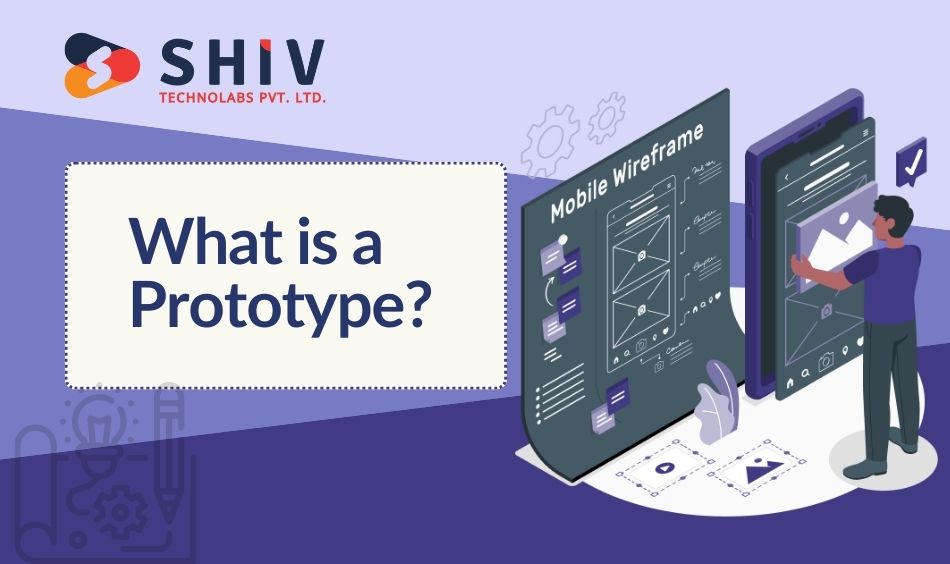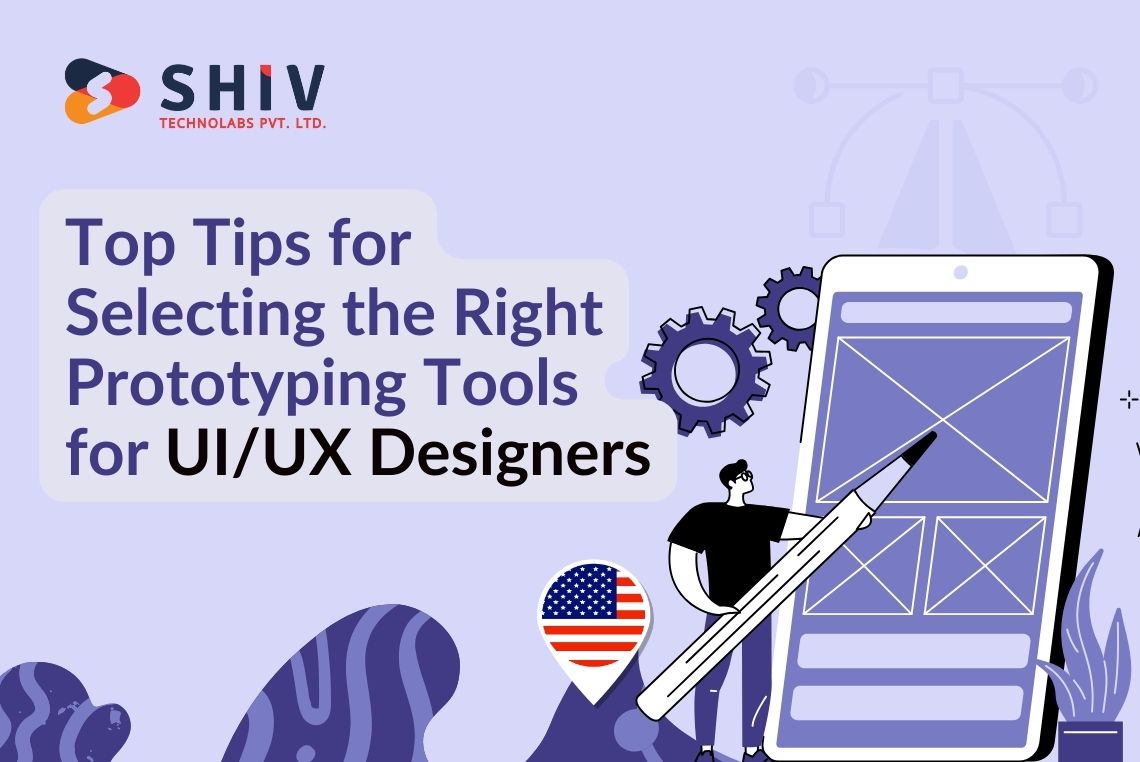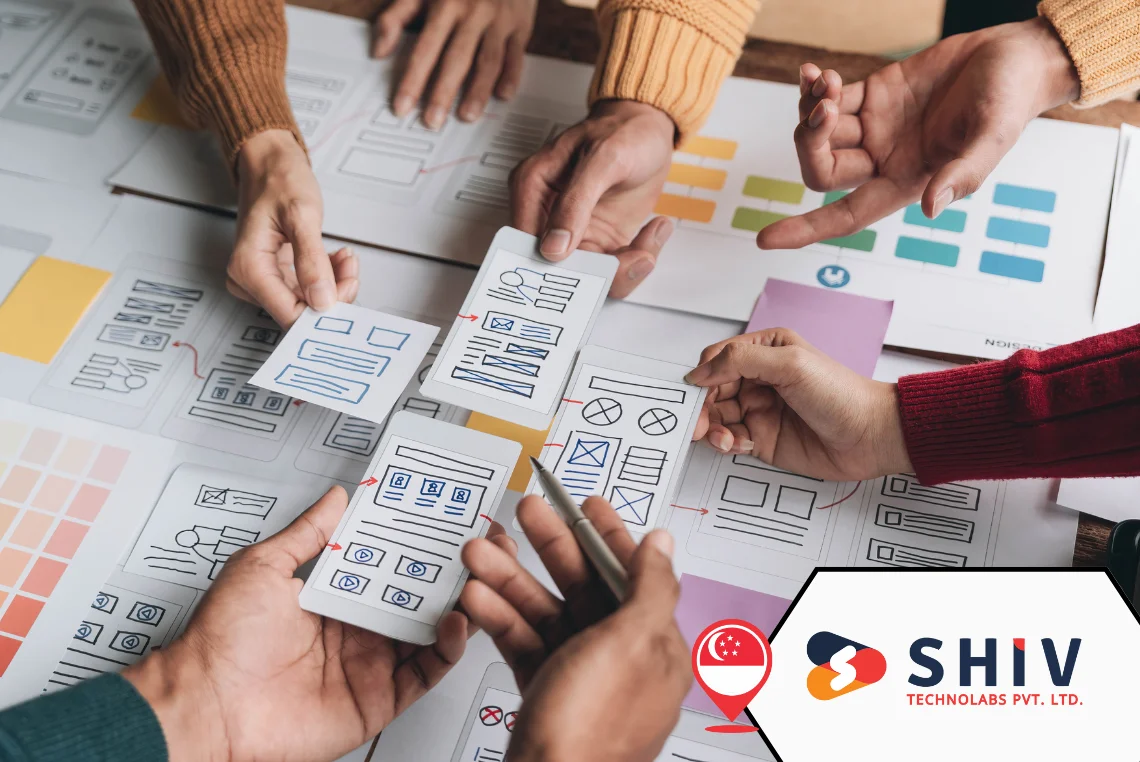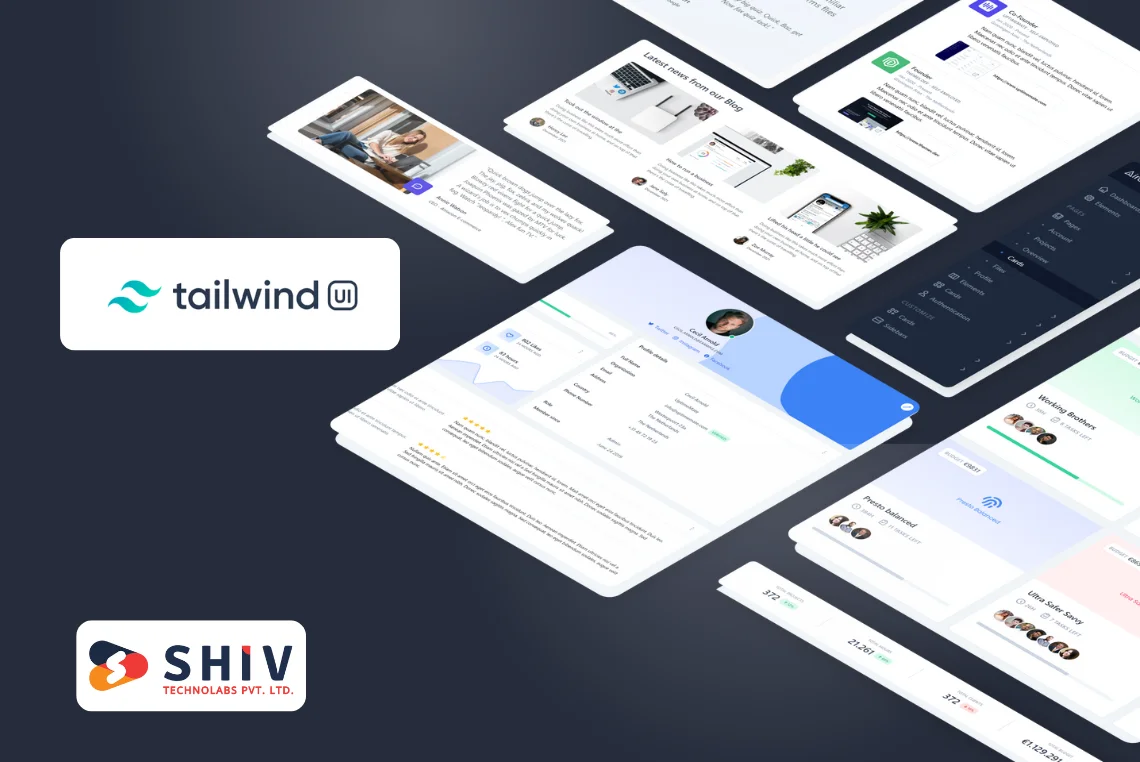Table of Contents
In the dynamic world of UI/UX design, prototyping has become an essential part of the design process. Prototyping allows designers to create preliminary models of their products, helping them visualize the end result and identify potential issues early in the development cycle. Choosing the right prototyping tool is crucial as it can significantly influence the efficiency of the design process and the quality of the final product. This blog aims to guide UI/UX designers through the key considerations for selecting the most suitable prototyping tools, helping achieve a productive design experience.
In recent years, the demand for effective prototyping tools has surged, with the global prototyping software market expected to reach USD 33.83 billion by 2026, growing at a compound annual growth rate (CAGR) of 14.6% from 2021 to 2026. This growth is driven by the increasing need for efficient and user-friendly tools that streamline the design process and enhance collaboration among team members. A study by Forrester Research revealed that using advanced prototyping tools can reduce design and development time by up to 50%, significantly speeding up the time-to-market for new products.
Moreover, a survey conducted by Adobe found that 87% of designers believe that prototyping tools play a critical role in improving communication with stakeholders and clients. Effective prototyping not only helps in visualizing and refining design concepts but also in gathering valuable feedback early in the development process. This early feedback loop is essential for identifying and addressing usability issues, ensuring that the final product meets user expectations. Additionally, teams using interactive prototyping tools reported a 30% increase in overall project satisfaction, highlighting the importance of selecting the right tools for successful UI/UX design outcomes.
What is a Prototype?

A prototype is an early sample, model, or release of a product created to test a concept or process. In UI/UX design, prototypes are interactive simulations of the final product. They range from low-fidelity wireframes, which outline basic structures and functionalities, to high-fidelity prototypes that closely resemble the final product in look and feel.
# Types of Prototypes:
- Low-Fidelity Prototypes: Simple sketches or wireframes that outline the basic structure and layout of a design. They are quick to create and primarily used for brainstorming and early-stage feedback.
- High-Fidelity Prototypes: More detailed and interactive, these prototypes mimic the final product closely, including design elements, animations, and user interactions.
- Clickable Prototypes: Allow users to click through screens and experience the flow of the application or website, providing a better sense of user experience and navigation.
- Code Prototypes: Built using actual code, these are often used in later stages of design to test the functionality of certain features.
Why Are Prototypes Integral to the UX Design Process?
Prototyping is a critical step in the UX design process for several reasons: It allows designers to test and refine their ideas, ensuring that the final product meets user needs and expectations. By creating a prototype in UI/UX design, designers can identify usability issues and make necessary adjustments before full-scale development begins. This iterative process helps in minimizing costly changes during later stages of the project.
Additionally, prototypes serve as an effective communication tool, bridging the gap between designers, developers, and stakeholders. They provide a tangible representation of the design, making it easier to gather feedback and achieve alignment on the project’s direction.
# Improving User Experience:
Prototypes allow designers to test and refine the user experience before the final product is developed. By simulating user interactions, designers can identify usability issues and make necessary adjustments to improve the overall user experience.
# Facilitating Communication and Collaboration:
Prototypes serve as a visual communication tool that helps designers convey their ideas effectively to stakeholders, clients, and team members. They bridge the gap between abstract concepts and tangible designs, fostering better collaboration and understanding among team members.
# Identifying and Resolving Design Issues Early:
By testing designs early and often, prototypes help in identifying potential issues before they become costly problems. This iterative process of testing and refining reduces the risk of major design flaws and ensures that the final product meets user needs and expectations.
# Saving Time and Resources:
Prototyping helps in speeding up the design process by allowing designers to experiment with different ideas and solutions quickly and cost-effectively. This reduces the need for extensive rework during the development phase, saving time and resources.
Also read : Advancing Mobile Apps: Key Flutter UI/UX Design Trends in USA
Understanding Your Needs

Before diving into the selection of prototyping tools, it’s essential to understand your specific design needs and requirements. Here are some factors to consider: Start by evaluating the scope and complexity of your projects, as this will influence the level of functionality you require from a prototyping tool. Consider the frequency and depth of collaboration within your team, as some tools offer better support for real-time collaboration and version control. Assess your technical expertise and that of your team to ensure that the chosen tool is not only powerful but also user-friendly. Here are some factors to consider:
# Identify Your Design Goals:
What are you aiming to achieve with your prototype? Are you looking to test the overall user flow, gather user feedback, or demonstrate a specific feature to stakeholders? Clearly defining your goals will help you choose a tool that aligns with your objectives.
# Assess Team Collaboration Requirements:
Consider the collaboration needs of your team. If you work in a team environment, a prototyping tool that supports real-time collaboration and version control can be incredibly beneficial. It allows multiple team members to work on the same project simultaneously, maintaining smooth communication and collaboration.
# Consider the Complexity of Your Projects:
The complexity of your design projects will also influence your choice of prototyping tools. For simple wireframes, a basic tool might suffice. However, for more complex and interactive designs, you might need a more advanced tool that offers a wide range of features and functionalities.
Key Features to Look For
When selecting a prototyping tool, there are several key features to consider: A user-friendly interface is essential to minimize the learning curve and maximize productivity. Integration capabilities with other design and development tools can streamline your workflow and improve collaboration. Robust support for interactivity and animation is crucial for creating realistic and engaging prototypes.
Additionally, cross-platform compatibility ensures that your designs are consistent and functional across different devices and operating systems. Evaluating these features will help you find a tool that enhances your process of prototyping in UI/UX, ultimately leading to better design outcomes and user experiences.
# User Interface and Usability:
The prototyping tool should have an intuitive and user-friendly interface. A steep learning curve can hinder productivity, so opt for a tool that is easy to navigate and use. Look for tools that offer drag-and-drop functionality, pre-built templates, and an extensive library of UI components.
# Integration with Other Tools:
Seamless integration with other design and development tools is crucial for a smooth workflow. Ensure that the prototyping tool you choose can integrate with tools such as Sketch, Adobe XD, Figma, and development platforms like GitHub or Jira. This integration will enable you to maintain a cohesive design process and enhance collaboration with other team members.
# Support for Interactivity and Animation:
Prototypes should be interactive to effectively simulate the user experience. Look for tools that offer robust support for interactivity and animation. This includes features like clickable hotspots, transitions, and micro-interactions that can help bring your designs to life and provide a realistic user experience.
# Cross-Platform Compatibility:
Ensure that the prototyping tool you choose is compatible with multiple platforms and devices. This is especially important if you are designing for both web and mobile applications. Cross-platform compatibility allows you to test your designs on different devices, maintaining a consistent user experience across all platforms.
# Cost and Licensing Options:
Consider the cost and licensing options of the prototyping tool. While some tools offer free versions with limited features, others require a subscription or one-time purchase. Evaluate your budget and choose a tool that offers the best value for money without compromising on essential features.
Also read : The Ultimate Guide to Choosing a UI/UX Design Company in USA
Evaluating and Testing Tools
Selecting the right prototyping tool is not a one-size-fits-all process. It requires careful evaluation and testing to ensure that it meets your specific needs and preferences. Here are some steps to guide you through this process: Begin by defining the primary requirements and objectives for your projects, as this will help narrow down the options.
Consider the scalability of the tool to handle future project demands and team growth. Testing multiple tools side by side can provide a clearer comparison of their features and usability. Ensuring that the chosen UX UI prototyping tool integrates well with your existing workflow and tools is crucial for maintaining efficiency and consistency across your design projects.
# Free Trials and Demos:
Take advantage of free trials and demos offered by prototyping tool providers. This allows you to test the tool’s features and functionalities firsthand and determine if it suits your design workflow.
# User Reviews and Community Feedback:
Research user reviews and community feedback to gain insights into the pros and cons of different prototyping tools. Online design communities, forums, and social media groups are great places to find honest reviews and recommendations from fellow designers.
# Scalability and Future-Proofing:
Consider the scalability of the prototyping tool. As your projects and team grow, the tool should be able to accommodate increasing complexity and collaboration needs. Additionally, ensure that the tool receives regular updates and support from the provider to stay relevant.
Tips for Efficient Tool Adoption
Once you have selected a prototyping tool, efficient adoption is key to maximizing its benefits. Here are some tips to help you get the most out of your chosen tool: Effective integration into your workflow can significantly enhance productivity and collaboration within your team. By thoroughly understanding the features and capabilities of the tool, you can leverage it to its full potential.
Regularly updating your knowledge and staying informed about new features will ensure you are always using the best prototyping tools for UI/UX designers. Encouraging team members to share tips and best practices can also foster a more cohesive and efficient use of the tool across all projects.
# Training and Onboarding:
Provide comprehensive training and onboarding sessions for your team to ensure that everyone is familiar with the tool’s features and functionalities. This will help in reducing the learning curve and boosting productivity.
# Leveraging Online Resources and Tutorials:
Take advantage of online resources and tutorials offered by the tool provider. These resources can help you and your team master advanced features and techniques, further enhancing your design process.
# Regularly Reviewing and Updating Tools:
Periodically review and update your prototyping tools to make sure they continue to meet your evolving design needs. Stay informed about new features and updates released by the tool provider and incorporate them into your workflow as needed.
# Creating Internal Documentation and Guidelines:
Develop internal documentation and guidelines for using the prototyping tool. This can include best practices, tips, and standard operating procedures that help maintain consistency and efficiency across your design projects.
# Encouraging Continuous Learning and Experimentation:
Foster a culture of continuous learning and experimentation within your team. Encourage team members to explore new features, try out different design techniques, and share their insights and discoveries with the rest of the team.
# Participating in Design Communities and Forums:
Engage with online design communities and forums to stay updated on industry trends, share your experiences, and learn from other designers. This can provide valuable insights and inspiration for your own design projects.
# Setting Up Regular Team Check-ins and Feedback Sessions:
Schedule regular team check-ins and feedback sessions to discuss the effectiveness of the prototyping tool, address any challenges, and share tips and best practices. This collaborative approach ensures continuous improvement and optimal tool usage.
# Utilizing Prototyping Tool Plugins and Extensions:
Explore and utilize plugins and extensions available for your prototyping tool. These add-ons can enhance the tool’s capabilities and streamline your design process, making it more efficient and effective.
# Customizing Tools to Fit Your Workflow:
Customize the prototyping tool to fit your specific workflow and design needs. This can include creating custom templates, libraries, and shortcuts that align with your team’s processes and preferences.
# Tracking and Analyzing Tool Performance and Usage:
Regularly track and analyze the performance and usage of the prototyping tool. This helps in identifying areas for improvement and making sure the tool continues to add value to your design process.
# Maintaining Proper Security and Data Management:
Choose a prototyping tool with strong security features and data management practices. This is particularly important if you are handling sensitive client information or working on confidential projects.
Making the Final Decision
After evaluating and testing various prototyping tools and implementing efficient adoption strategies, it’s time to make the final decision. Here are some factors to consider:
# Weighing Pros and Cons:
Compare the pros and cons of each prototyping tool based on your evaluation and testing. Consider factors such as ease of use, feature set, integration capabilities, cost, and scalability.
# Aligning with Team Preferences and Workflows:
Make sure that the chosen prototyping tool aligns with your team’s preferences and workflows. A tool that fits well with your team’s processes and enhances collaboration will lead to better design outcomes.
# Choosing Tools with Long-Term Support and Updates:
Select a prototyping tool that offers long-term support and regular updates. This ensures that the tool remains relevant and continues to meet your design needs as technology and industry trends evolve.
Conclusion
Choosing the right prototyping tools is a vital step in the UI/UX design process. By understanding your specific needs, identifying key features, evaluating and testing tools, and adopting them efficiently, you can greatly improve your design workflow and create more effective user experiences. Prototyping not only helps in visualizing and refining designs but also in communicating ideas clearly to stakeholders and team members. With the right tool in hand, you can streamline your design process, save time and resources, and ultimately deliver a product that meets user expectations and business goals.
At Shiv Technolabs, we specialize in providing top-notch UI/UX design services. As a leading UI/UX design company in USA, we understand the importance of using the right tools and techniques to create exceptional digital experiences. Our team of skilled designers is adept at leveraging the latest prototyping tools to bring your vision to life. Whether you’re looking to enhance your website, develop a mobile app, or improve your product’s user experience, we have the expertise to deliver results that exceed your expectations.
Partner with Shiv Technolabs and let us help you create user-centered designs that drive engagement and satisfaction. Contact us today to learn more about our UI/UX design services and how we can support your project from concept to completion. Your success is our priority, and we are committed to helping you achieve it through innovative and effective design solutions.






![Web Design Hacks Used by Billion-Dollar Brands [How You Can Use Them Too!]](http://167.86.116.248/shivlab/wp-content/uploads/2025/03/Web-Design-Hacks-Used-by-Billion-Dollar-Brands-How-You-Can-Use-Them-Too.webp)













